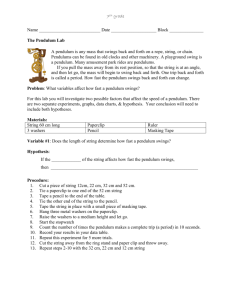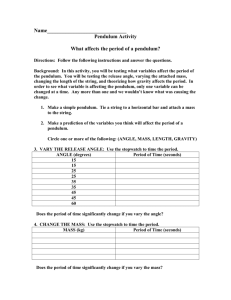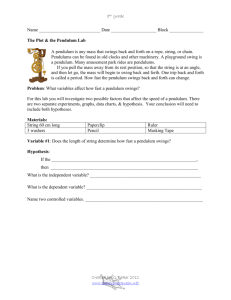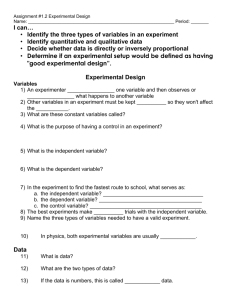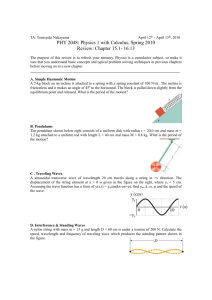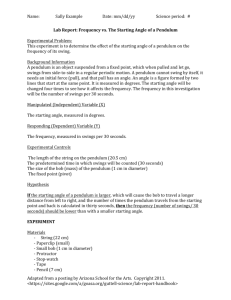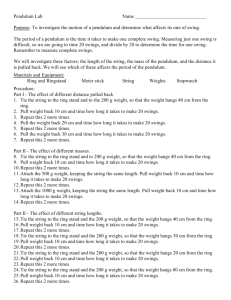The Plot & the Pendulum Lab
advertisement
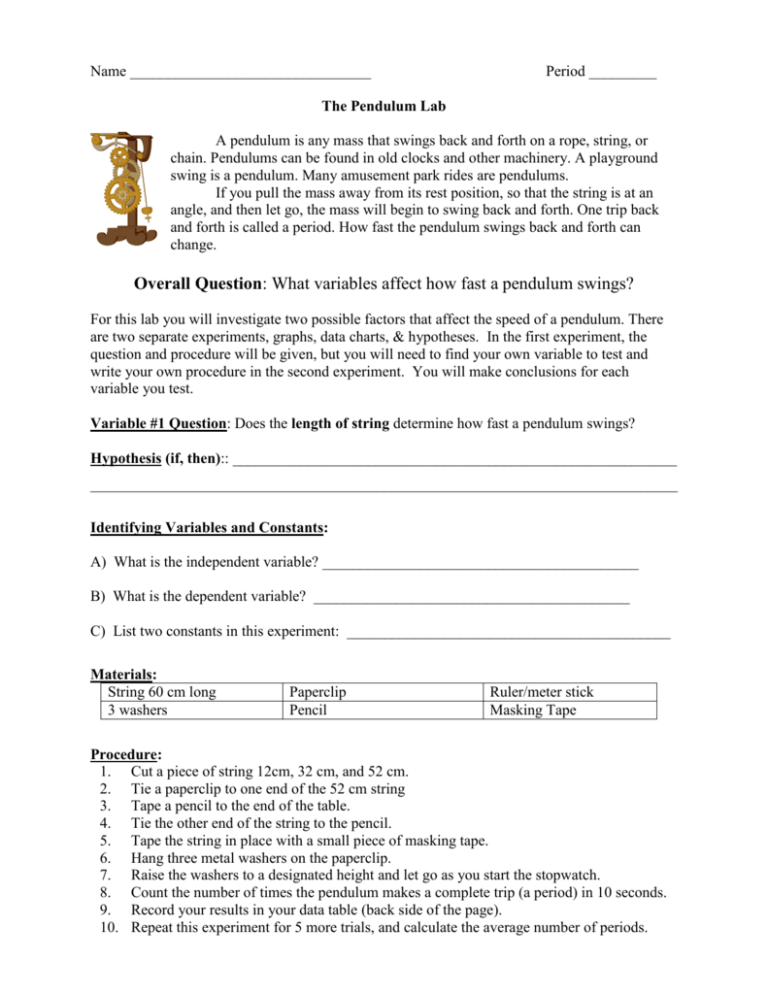
Name ________________________________ Period _________ The Pendulum Lab A pendulum is any mass that swings back and forth on a rope, string, or chain. Pendulums can be found in old clocks and other machinery. A playground swing is a pendulum. Many amusement park rides are pendulums. If you pull the mass away from its rest position, so that the string is at an angle, and then let go, the mass will begin to swing back and forth. One trip back and forth is called a period. How fast the pendulum swings back and forth can change. Overall Question: What variables affect how fast a pendulum swings? For this lab you will investigate two possible factors that affect the speed of a pendulum. There are two separate experiments, graphs, data charts, & hypotheses. In the first experiment, the question and procedure will be given, but you will need to find your own variable to test and write your own procedure in the second experiment. You will make conclusions for each variable you test. Variable #1 Question: Does the length of string determine how fast a pendulum swings? Hypothesis (if, then):: ___________________________________________________________ ______________________________________________________________________________ Identifying Variables and Constants: A) What is the independent variable? __________________________________________ B) What is the dependent variable? __________________________________________ C) List two constants in this experiment: ___________________________________________ Materials: String 60 cm long 3 washers Paperclip Pencil Ruler/meter stick Masking Tape Procedure: 1. Cut a piece of string 12cm, 32 cm, and 52 cm. 2. Tie a paperclip to one end of the 52 cm string 3. Tape a pencil to the end of the table. 4. Tie the other end of the string to the pencil. 5. Tape the string in place with a small piece of masking tape. 6. Hang three metal washers on the paperclip. 7. Raise the washers to a designated height and let go as you start the stopwatch. 8. Count the number of times the pendulum makes a complete trip (a period) in 10 seconds. 9. Record your results in your data table (back side of the page). 10. Repeat this experiment for 5 more trials, and calculate the average number of periods. 11. Repeat steps 2-10 with the 32 cm and 12 cm string. Data Table #1: How does the length of string affect how fast a pendulum swings? Length of String Number of periods during 10 seconds Trial 1 Trial 2 Trial 3 Trial 4 Trial 5 Average 10 cm 30 cm 50 cm Graph: Construct a graph showing the length of string vs. the average number of swings. Be sure to use the proper type of graph (look back at SP: Activity #6). Conclusion a) Was your hypothesis correct? _____________ b) What was the outcome of the experiment? In other words, what is the relationship between the length of string and the speed of the pendulum? c) Use evidence from your data to explain your answer to “b”. Sources of Error - What variables could have affected the outcome of your experiment (sources of error)? Discuss any problems that you had when doing this activity. Pendulum Lab: Part 2 For the second part of the lab, you need to choose a DIFFERENT variable that may affect the speed of a pendulum. You will fill out this portion of the lab IN YOUR NOTEBOOK, under the Activity name “Pendulum Lab.” Variable #2 Question: Hypothesis: Identifying Variables and Constants: A) What is the independent variable? B) What is the dependent variable? C) List two constants in this experiment: Materials List: Procedure: Data Table: (all work at this point needs to be approved by Mrs. Wagner BEFORE you begin the experiment. The data table must be made BEFORE getting her approval)! Graph: (choose an appropriate type of graph based on the data you collected) You can cut out the graph paper template from below to use in your notebook! Conclusion: Sources of Error:


